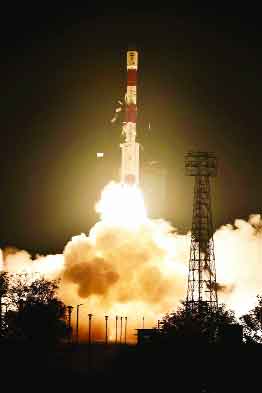For once, the launch of DRDO’s imaging satellite didn’t steal the limelight except the drama of a midnight launch at Sriharikota and its military uses. That we are told was to make sure that the satellite traverses the Indian subcontinent when there is maximum sunlight on it and the launch time decides its diurnal rhythms. But along with it, Isro also launched KalamSat, the lightest communication satellite, almost as heavy as a chair at 1.2 kg, developed by students, free. Built at a cost of Rs 12 lakh, the 10-cm cube satellite has a life span of two months and will be the first to use the PSLV rocket’s fourth stage as an orbital platform and conduct experiments. Its utility? This one will study the communication systems of nano satellites, which can be applied in disaster management. While the next lunar mission and preparations for Gaganyaan or the manned mission, intended for 2022, make news, the significance of ISRO’s latest launch lies in the fact that besides cost-effectiveness, it is also looking at developing the scientific temperament among our youth, encouraging education satellites and piloting their trial modules in real time. Soon it will be launching its TV as an interface platform with millennials.
The most noteworthy aspect of the student initiative is that the young scientists came from remote corners of the country. This will further embolden young Indians to commit themselves to the Indian space programme and conduct experiments that may result in breakthrough technological solutions for our lives on earth. The multiple applications of ISRO’s projects already have demonstrable spin-offs. For example, the lithium ion battery for our rockets and spacecraft is finding very good application in electric vehicles. Similarly, now that the Gaganyaan space suits are being developed in a cost-effective manner with fire-resistant chemicals, the fire-retardant technology can be used in hazardous industries to protect workers. ISRO is perhaps these days the best example of the Government’s “Make in India” programme. In fact, the Gaganyaan mission will be a national project in the true sense because it won’t just be confined to ISRO but will include research institutions and private industry.
Space, therefore, is quickly turning into not just our final frontier, but a profitable, multi-dimensional one. ISRO has, in a quick spurt of a decade or so, emerged as one of the key players in the global space market, particularly as a low-cost carrier of surveillance and communication satellites. Ever since we launched 104 satellites in a single rocket (PSLV-C37), 96 of which were from the US, even the big space-probing nations have acknowledged our credibility. The New York Times commended ISRO for the high-risk launch “because the satellites, released in rapid-fire fashion every few seconds from a single rocket as it travelled at 17,000 miles an hour, could collide with one another in space if ejected into the wrong path.”
With many of our landmark missions too now costing much lesser than equivalents in Russia, Europe and the US, India can now proudly proclaim to have shifted the axis of the space race to Asia. And by now partnering with altruistic missions, ISRO has shown that space programmes are not just about extra-terrestrial influence but an Elysium for Earth itself.
Writer and Courtesy: The Pioneer








 OpinionExpress.In
OpinionExpress.In















Comments (0)